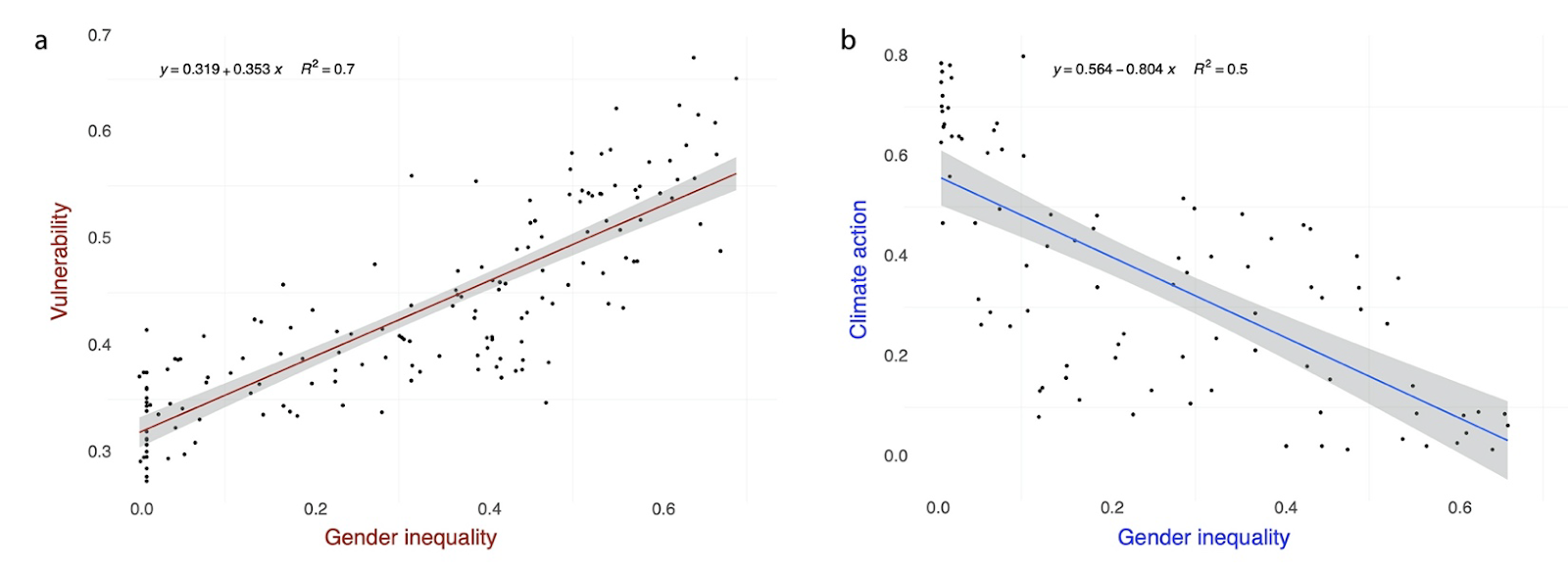March 29, 2020
The gist:
The starting point for this issue of womxn and climate is this:
“There’s a solid base of evidence showing that women are disproportionately vulnerable to climate change, not because there is something inherently vulnerable about women, but because of socio-cultural structures that deprive women of access to resources, decision-making, information, agency, etc.”
Explains Marina Andrijevic, a research analyst at Climate Analytics and the lead author of the study.

Plots showing a) the link between gender inequality and vulnerability to climate change, and b) the link between gender inequality and climate action. Indices used: Gender inequality, (Gender Inequality Index from the United Nations Development Programme), vulnerability (ND-GAIN index) using 2017 country-level estimates, climate action (CLIMI index) using 2005-2010 average country level estimates. Source: Andrijevic et al (2020).
Andrijevic says. She notes that “improvements in gender equality contribute to climate resilience”, adding that gender equality is crucial “not only for women but for the society as a whole”.
Dr Astghik Mavisakalyan, a principal research fellow at Curtin University – who was not involved in the study – tells Carbon Brief that there is a two-way relationship between improved gender equality and increased climate resilience. She adds that progress in one can drive progress in the other to create a “virtuous circle of sustainable and equitable development”.
It’s all of our job to elevate the status of womxn, not only socio-economically, but removing the perception, that helping womxn is not a valuable or profitable endeavor.
Read the AYESHA TANDON CarbonBrief article here.







